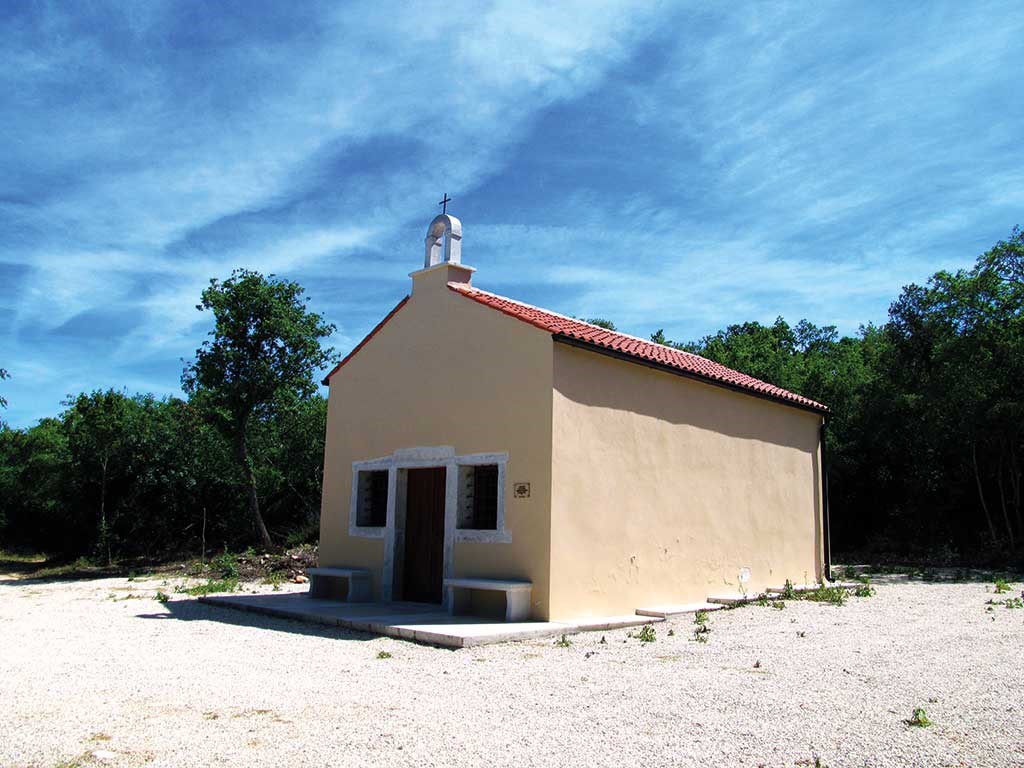

The Church of St Andrew with the accompanying estate was first mentioned as early as in 1226. It is a medieval building that preceded today’s church built in the 18th century next to the old path leading to Fuškulin from Vrsar. It was erected by local fishermen and farmers, who went on prayer processions (rogationes) to the church for good catch, rain, and crop fertility.
The church certainly existed at the beginning of the 19th century, and was recorded in the 1820 Franciscan Cadastre. In the Cadastre, the entire area around the church is called S. Andrea, with brotherhood-owned estates in it. Document from the archive mentions olive orchards owned by the brotherhood of Saint Andrew. It is interesting to note that estates owned by the Parish of Vrsar still exist in this area. The restoration of the church in 1915 was funded by the faithful, and the total cost of the restoration amounted to 150 forints. The church was abandoned when the locals from Vrsar left after World War II, and the newly arrived population neither maintained it nor held mass in it. Documents found in the archive of the Parish of Vrsar mention that the church was desacralised, and that sheep were kept inside it. The church was exposed to ruin for 60 years, resulting in a collapsed roof and theft of the church floor. The parish priest removed the bell-cot from the church in order to preserve it, and stored it in the yard of the parish church in Vrsar along with the altar and mensa. In the meantime, the church was overgrown by plants, so it became difficult to recognise it.

The church was erected by local fishermen and farmers, who went on prayer processions (rogationes) to the church for good catch, rain, and crop fertility.
The first restoration works on the church were carried out owing to L. Zohil, a parish priest who first cleaned up the church ruins and identified its architectural contours. In the period between 2009 and 2011, the church was systematically restored: the walls were restored, a new roof was constructed, the church was paved, electrical installations were set up, the sidewalks were paved, and façade placed. The altar mensa (brought in from the Parish of Labin Gornji) was placed on the altar. The stone bell-cot was returned to the church, and the gravel path leading from the Flaban pond to the church was maintained. A Way of the Cross was set up on the path from the Flaban pond to the Church of St Andrew, where the penitent congregation of Vrsar gathers during Lent. Ivan Milovan, Bishop of Poreč and Pula, blessed the church on 30 November 2010. All works on the church (finishing works on the façade) were completed on the feast day of Saint Andrew in 2011.